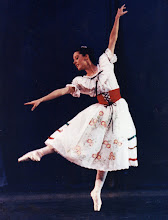
Many dancers simply dance, without thought to what might happen if they became injured and unable to continue dancing. It's important to think about alternatives to a dancing career, not only due to unforeseen circumstances such as injury, but after you retire from dancing at the ripe old age of forty or older (if you're lucky). One of the best ways you can ensure continued employment in the field you love is to begin teaching dance. Ballet companies usually have a school associated with them, and this is the perfect place to begin training as a teacher. Being a great dancer doesn't necessarily mean you will be a great teacher, but the best way to learn how to teach is to do it!
There are many wonderful books about teaching ballet. Some of my favorites include these:
Classical Ballet Technique, by Gretchen Ward Warren
This book goes into great detail about the tradition of ballet, the ideal body structure and posture for ballet, methods of teaching, positions of the body and when to introduce steps, and includes notes on classroom etiquette, a pronunciation guide, and glossary of terms.
In this book you will find a history of pointe dancing, the foot and pointe shoe making process, the fitting process, caring for shoes, basics of teaching pointe, sample pointe classes, and pointe-related injuries and their remedies.
You will find diagrams for directions of the body and feet. Arabesques, port de bras, and positions of the body are described for the Cecchetti Method, the French School, and the Russian School (Vaganova).





No comments:
Post a Comment